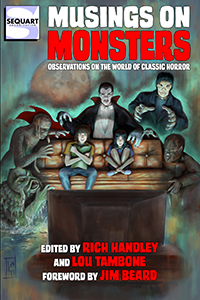Vampires have changed tremendously over the years. They used to be representative of the bestial side of human nature, thoughtless creatures of pure Id, no better than animals themselves. Over time, however, they have evolved from frightening monsters to misunderstood anti-heroes, beauty captured forever. It’s precisely because it strays away from these new trends and brings vampires back to their roots, that The Strain is so unique both in appearance and what they say about society as a whole.
Vampire folklore was incredibly popular around the world, with many cultures having some variation on the idea of a blood sucking monster from beyond the grave. These remained isolated tales, however, until author Bram Stoker collected a number of them and created the basis for all romantic vampires: Count Dracula.
Dracula, based loosely on Wallachian prince Vlad Tepes, was not a slavering beast but the manifestation of one of the greatest fears of Victorian society: sex. Stoker was not the first to do this, but his novel became incredibly popular almost instantly. All current vampires that manifest as attractive, young, and lustful can trace their roots back to Stoker’s portrayal. This became even more apparent when 1931′s film Dracula hit the theaters. Suddenly this manifestation of pure libido could be seen on screen, portrayed by hot, young Hungarian actor Bela Lugosi.
In fact, the irony is that sex appeal was part of how Universal secured the rights to the story. Bram Stoker’s widow was asking more than they were willing to pay, so they sent attractive Lugosi in to charm her, implying that they would give him the role. The studio had no intention of doing so, instead planning to cast Lon Chaney, but the veteran actor died shortly after the rights were secured and Lugosi changed how the world saw vampires forever.
Since then, with his genre-defining performance, Lugosi’s vampire has been the go-to template for future projects. The desire for audiences to not be in love with a monster, albeit an attractive one, eventually lead to more sympathetic portrayals including those in the roleplaying game Vampire: the Masquerade, Joss Whedon’s Angel, and in their most extreme form, the characters in Twilight and The Vampire Diaries. These recent portrayals of vampires target more of a teenage girl audience but have proven to stretch across all types of readers and viewers.
The Strain, however, is a far different portrayal of the night-traveling blood suckers. Instead of being suave, debonair loners trying to wrestle with their inner demons, the vampires of The Strain instead draw from the unthinking monsters that used to be the norm. Not only are they not embodiments of sex, they are entirely sexless, with no genitals and a rearranged reproductive system based on spreading like a virus.
This last bit is important to understand, since vampires are not necessarily relegated to only representing aspects of humanity. Their similar appearance to us makes this a natural tendency, but ultimately they can be representative of many real world concerns. The Strain in general comments on a multitude of issues with our society today. Perhaps one of the most obvious is the problem of disease epidemic and the true possibility that it could spread to other parts of the world. Malaria is one example of this concern, causing the most deaths in regions without the proper resources.
In addition, the infection of vampires in the novel have lead to a polluted New York, in which it’s dark all the time so that they may roam free without concern of the sun’s deadly rays. Many may argue that human activity could lead to a world like this, fueling pollution and quickly dwindling energy resources. Unless humanity starts paying attention and starts taking care to do common sense tasks, such as recycling, and demand more renewable resources from energy providers and gas companies, we could end up in a post-apocalyptic world ourselves. Except it won’t be vampires who’ve ruined our Earth.
While it’s unlikely that the unsexy monsters of Guillermo del Toro and Chuck Hogan’s show will become the standard, they have still reintroduced horror into the portrayal of creatures that have, in recent years, lost their edge. Hopefully future vampires will be a little less broody and a little more bloody.





















































Guillermo del Toro is certainly opposed to romanticizing vampires. Cronos was about vampires and poverty, and generally removed all glamour from vampirism. (It also began his productive relationship with Ron Perlman.) Blade 2 had a telegenic lead actor but Wesley Snipes portrays a half human daywalker whose stated goal is to kill vampires; earning him the right to a somewhat sympathetic portrayal. The plot is about repellent, resilient, infectious, amoral altered vampires (a new strain) who decimate and nearly wipe out the more conventional vampire population, who are themselves villianous and double-crossing.
The Strain completes del Toro’s transformation of vampires to zombies. The strigoi become very nosferatu like in appearance shortly after infection, including gruesome, graphic examples of the genitalia loss you mentioned. Speech is restricted to a chosen few; not to humanise them but as a tool granted by their Master to help them kill and turn more humans. Two of the lead protagonists work for the CDC; and that perhaps best sums up del Toro’s take.